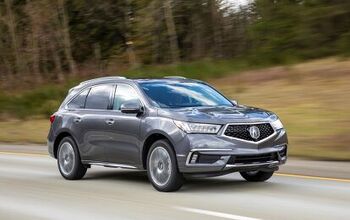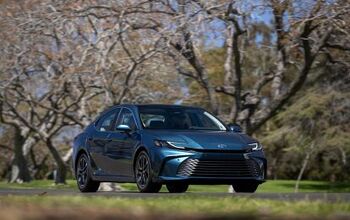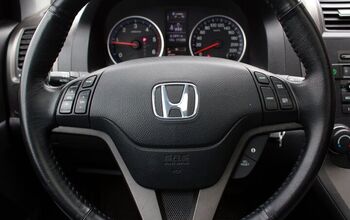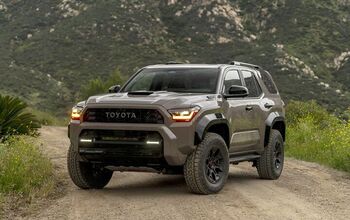GM Working on More Hardcore Active Aero Technology

General Motors is cooking up a new way to make its fastest cars even quicker around a racetrack.
AutoGuide.com has uncovered eight separate patents filed by GM for a slew of new active aerodynamic systems, most of them dealing with the control of different subsystems. For instance, there is a patent for a “method and apparatus for controlling vehicle tractive effort,” while other patents are for verifying downforce readings from a force sensor.
No specific vehicles are mentioned by the patents, and although a picture of a Camaro does appear in five of the filings, it appears to be a fifth-generation model, which may be simply acting as a test mule for the new active aero.
In the patent for “vehicle, system, and method for controlling active aerodynamic elements,” the active aerodynamic system is described as using movable spoilers, wings and air dams that can vary the airflow around the vehicle. The patent also says that active aerodynamic systems can be used to aid in braking, along with redirecting air to help with cooling.
SEE ALSO: Spied: New Corvette ZR1 in its Glorious Production Skin
When combined, the patents are describing a system that will be able to understand exactly what is going on aerodynamically and make adjustments using actuators based on outside information and info from the vehicle like wheel speed and steering wheel angle.
The real question remains: which vehicle will use this active aero system first? If spy photos are to be believed, the upcoming Chevrolet Corvette ZR1 has already been spied wearing some active aerodynamic elements, making it the most likely candidate for this system. Many might hope that the system will find its way to a high-performance Camaro variant as well, but so far, there isn’t much proof to suggest that is happening.
On many fast cars, aerodynamic elements are fixed, but the most advanced aerodynamics systems, like the one in the Nurburgring-slaying Lamborghini Huracan Performante, for example, are adaptive, meaning they can toggle between different settings based on the driving situation. Typically, fast cars need more downforce in the corners and less aerodynamic drag on the straights, but most cars can either do one or the other. If a car can do both without screwing up the other, it means a faster lap.
We reached out to GM to ask about active aero development after the first batch of patents surface and were greeted with the customary “We have no comment at this time,” from Ron Kiino, Chevrolet Communications manager for performance cars.

Stephen covers all of the day-to-day events of the industry as the News Editor at AutoGuide, along with being the AG truck expert. His truck knowledge comes from working long days on the woodlot with pickups and driving straight trucks professionally. When not at his desk, Steve can be found playing his bass or riding his snowmobile or Sea-Doo. Find Stephen on <A title="@Selmer07 on Twitter" href="http://www.twitter.com/selmer07">Twitter</A> and <A title="Stephen on Google+" href="http://plus.google.com/117833131531784822251?rel=author">Google+</A>
More by Stephen Elmer
































Comments
Join the conversation